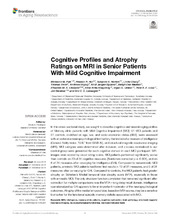| dc.contributor.author | Flak, Marianne Møretrø | en_US |
| dc.contributor.author | Hol, Haakon Ramsland | en_US |
| dc.contributor.author | Hernes, Susanne M S | en_US |
| dc.contributor.author | Chang, Linda | en_US |
| dc.contributor.author | Ernst, Thomas | en_US |
| dc.contributor.author | Engvig, Andreas | en_US |
| dc.contributor.author | Bjuland, Knut Jørgen | en_US |
| dc.contributor.author | Madsen, Bengt-Ove | en_US |
| dc.contributor.author | Lindland, Elisabeth Margrete Stokke | en_US |
| dc.contributor.author | Knapskog, Anne Brita | en_US |
| dc.contributor.author | Ulstein, Ingun | en_US |
| dc.contributor.author | Lona, Trine Eli.B. | en_US |
| dc.contributor.author | Skranes, Jon Sverre | en_US |
| dc.contributor.author | Løhaugen, Gro | en_US |
| dc.date.accessioned | 2019-05-28T12:09:49Z | |
| dc.date.available | 2019-05-28T12:09:49Z | |
| dc.date.issued | 2018-11-21 | |
| dc.Published | Flak MM, Hol HR, Hernes SS, Chang L, Ernst T, Engvig A, Bjuland KJ, Madsen B, Lindland EMS, Knapskog AB, Ulstein I, Lona Te, Skranes J, Løhaugen GCC. Cognitive Profiles and Atrophy Ratings on MRI in Senior Patients With Mild Cognitive Impairment. Frontiers in Aging Neuroscience. 2018;10:384 | eng |
| dc.identifier.issn | 1663-4365 | |
| dc.identifier.uri | https://hdl.handle.net/1956/19769 | |
| dc.description.abstract | In this cross-sectional study, we sought to describe cognitive and neuroimaging profiles of Memory clinic patients with Mild Cognitive Impairment (MCI). 51 MCI patients and 51 controls, matched on age, sex, and socio-economic status (SES), were assessed with an extensive neuropsychological test battery that included a measure of intelligence (General Ability Index, “GAI,” from WAIS-IV), and structural magnetic resonance imaging (MRI). MCI subtypes were determined after inclusion, and z-scores normalized to our control group were generated for each cognitive domain in each MCI participant. MR-images were scored by visual rating scales. MCI patients performed significantly worse than controls on 23 of 31 cognitive measures (Bonferroni corrected p = 0.001), and on 8 of 31 measures after covarying for intelligence (GAI). Compared to nonamnestic MCI patients, amnestic MCI patients had lower test results in 13 of 31 measures, and 5 of 31 measures after co-varying for GAI. Compared to controls, the MCI patients had greater atrophy on Schelten's Medial temporal lobe atrophy score (MTA), especially in those with amnestic MCI. The only structure-function correlation that remained significant after correction for multiple comparisons was the MTA—long delay recall domain. Intelligence operationalized as GAI appears to be an important moderator of the neuropsychological outcomes. Atrophy of the medial temporal lobe, based on MTA scores, may be a sensitive biomarker for the functional episodic memory deficits associated with MCI. | en_US |
| dc.language.iso | eng | eng |
| dc.publisher | Frontiers | eng |
| dc.rights | Attribution CC BY | eng |
| dc.rights.uri | http://creativecommons.org/licenses/by/4.0 | eng |
| dc.subject | MCI | eng |
| dc.subject | intelligence | eng |
| dc.subject | memory clinic patients | eng |
| dc.subject | cognitive dysfunction | eng |
| dc.subject | brain pathology | eng |
| dc.subject | structural magnetic resonance imaging | eng |
| dc.subject | neuropsychological functioning | eng |
| dc.subject | neuropsychological tests | eng |
| dc.title | Cognitive Profiles and Atrophy Ratings on MRI in Senior Patients With Mild Cognitive Impairment | en_US |
| dc.type | Peer reviewed | |
| dc.type | Journal article | |
| dc.date.updated | 2019-02-20T10:30:39Z | |
| dc.description.version | publishedVersion | en_US |
| dc.rights.holder | Copyright 2018 The Author(s) | |
| dc.source.articlenumber | 384 | |
| dc.identifier.doi | https://doi.org/10.3389/fnagi.2018.00384 | |
| dc.identifier.cristin | 1633077 | |
| dc.source.journal | Frontiers in Aging Neuroscience | |
| dc.identifier.citation | Frontiers in Aging Neuroscience. 2018, 10, 384. | |
| dc.source.volume | 10 | |

